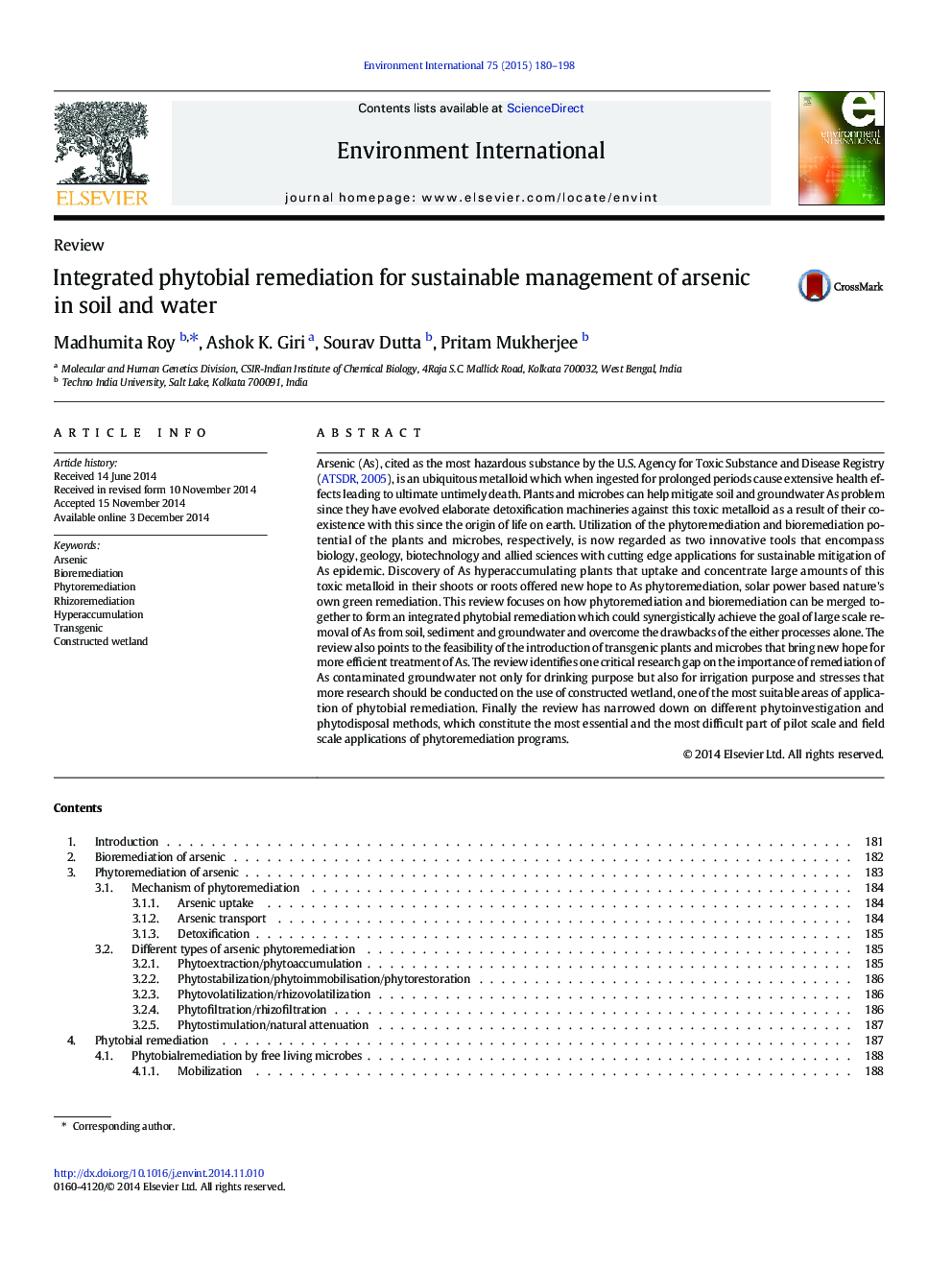| کد مقاله | کد نشریه | سال انتشار | مقاله انگلیسی | نسخه تمام متن |
|---|---|---|---|---|
| 4422707 | 1619053 | 2015 | 19 صفحه PDF | دانلود رایگان |
• Bioremediation of As is microbe mediated transformation, adsorption & accumulation of As.
• Phytoremediation of As is plant mediated removal of As from soil and groundwater.
• Bioremediation and phytoremediation should be integrated for effective removal of As.
• Constructed wetland can be used for applying phytobialremediation of As.
• More research should be made on arsenic recycling from disposed biomass.
Arsenic (As), cited as the most hazardous substance by the U.S. Agency for Toxic Substance and Disease Registry (ATSDR, 2005), is an ubiquitous metalloid which when ingested for prolonged periods cause extensive health effects leading to ultimate untimely death. Plants and microbes can help mitigate soil and groundwater As problem since they have evolved elaborate detoxification machineries against this toxic metalloid as a result of their coexistence with this since the origin of life on earth. Utilization of the phytoremediation and bioremediation potential of the plants and microbes, respectively, is now regarded as two innovative tools that encompass biology, geology, biotechnology and allied sciences with cutting edge applications for sustainable mitigation of As epidemic. Discovery of As hyperaccumulating plants that uptake and concentrate large amounts of this toxic metalloid in their shoots or roots offered new hope to As phytoremediation, solar power based nature's own green remediation. This review focuses on how phytoremediation and bioremediation can be merged together to form an integrated phytobial remediation which could synergistically achieve the goal of large scale removal of As from soil, sediment and groundwater and overcome the drawbacks of the either processes alone. The review also points to the feasibility of the introduction of transgenic plants and microbes that bring new hope for more efficient treatment of As. The review identifies one critical research gap on the importance of remediation of As contaminated groundwater not only for drinking purpose but also for irrigation purpose and stresses that more research should be conducted on the use of constructed wetland, one of the most suitable areas of application of phytobial remediation. Finally the review has narrowed down on different phytoinvestigation and phytodisposal methods, which constitute the most essential and the most difficult part of pilot scale and field scale applications of phytoremediation programs.
Figure optionsDownload as PowerPoint slide
Journal: Environment International - Volume 75, February 2015, Pages 180–198
